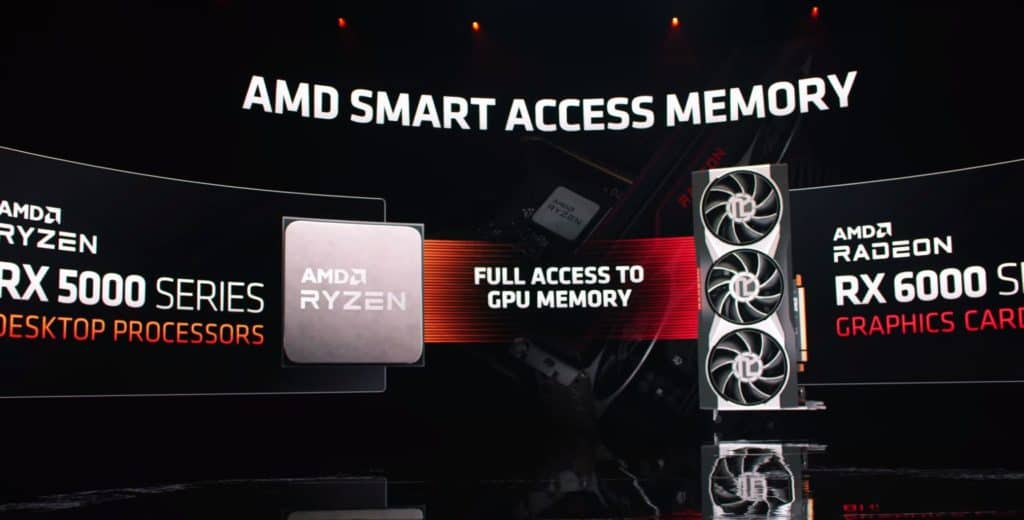ASUS Have Had Smart Access Memory Support Enabled For 1st Generation Ryzen CPUs On B450 Motherboards
It could be that older AMD CPUs get a performance boost soon...
- Last Updated May 14, 2021

If you have been keeping up with AMD’s recent releases, then you might be aware that their new smart access memory is the feature that they are putting a lot of faith in when it comes to CPU uptick and performance.
Now, whilst this feature will be available readily in the brand new Ryzen 5 CPUs that hit the market a short while ago, it looks like the feature will now be available on 1st generation Ryzen chips, and the results that have been posted definitely pose some questions for the future of AMD CPU support and compatibility.
What We Know
Smart Access Memory is a new method that AMD has come up with to increase the performance and communication between their Ryzen series CPUs and their Radeon series GPUs. It essentially assists a GPU in accessing and using the direct memory on a CPU, speeding up load times in the process.
Support for this feature is found within the newest Zen 3 Ryzen chips, as well as the 6000 series GPUs that AMD just launched, with official support ingrained in the 500 series motherboards from AMD and unofficial support from manufacturers on 400 series AMD motherboards and even Intel’s 400 series motherboards. It looks like the tech is getting a large rollout basically.
Along with the popular adoption of this new tech, there were plenty of different sources telling us that older AMD CPUs wouldn’t be getting the same access to smart access tech. This was disappointing for many – especially considering that there are a lot of PC gamers out there relying on Zen 2 CPUs from AMD in their computers.
Regardless, it was confirmed on Twitter that technically smart access memory could be turned on or off on old CPUs, and since then motherboard manufacturers have been enabling smart access memory features on their components.
So, Reddit user Merich98 decided to use this to his advantage, and embark on an educational journey with their Ryzen 7 1700 loaded into an ASUS B450-PLUS motherboard with a Radeon RX 580 by AMD as their graphics card.
They enabled smart access memory and recorded the results with these key components. They tested the games Doom Eternal and Shadow of The Tomb Raider and as you can see in the results posted below, there wasn’t any real difference when the feature was tested (both games were running at 1080p on ‘ultra’).
Doom Eternal results
With AMD SAM DISABLED ON BIOS:
- Run 1: Average FPS: 125.6FPS | Min. FPS: 82.2FPS | Max. FPS: 250.3FPS | 1% Low: 83.6FPS | 0.1% Low: 41.1FPS
- Run 2: Average FPS: 123.0FPS | Min. FPS: 87.4FPS | Max. FPS: 251.1FPS | 1% Low: 86.1FPS | 0.1% Low: 75.7FPS
- Run 3: Average FPS: 123.0FPS | Min. FPS: 87.7FPS | Max. FPS: 251.4FPS | 1% Low: 83.6FPS | 0.1% Low: 73.5FPS
With AMD SAM ENABLED ON BIOS:
- Run 1: Average FPS: 125.9FPS | Min. FPS: 85.4FPS | Max. FPS: 253.0FPS | 1% Low: 86.0FPS | 0.1% Low: 77.1FPS
- Run 2: Average FPS: 124.2FPS | Min. FPS: 82.0FPS | Max. FPS: 252.9FPS | 1% Low: 85.9FPS | 0.1% Low: 43.0FPS
- Run 3: Average FPS: 124.6FPS | Min. FPS: 79.4FPS | Max. FPS: 252.8FPS | 1% Low: 81.7FPS | 0.1% Low: 65.7FPS
Overall Average with AMD SAM ENABLED:
- Average FPS: 124.90FPS | Min. FPS: 82.26FPS | Max. FPS: 252.90FPS | 1% Low: 84.53FPS | 0.1% Low: 61.93FPS
Final Results:
- Average FPS: +0.839%;
- Min. FPS: -6.20%;
- Max. FPS: +0.596%;
- 1% Low: +0.119%;
- 0.1% Low: -2.365
What Does This Mean For You?
Those are a lot of numbers, so let’s talk about what they mean. Basically, the fact that there is very little change in the performance of in-game graphics and FPS indicates that when the smart access memory feature is enabled on older hardware that wasn’t designed with it in mind, that it could have minimal effects.
In fact, judging on some of the numbers it could even be fair to say that sometimes smart access memory on older hardware negatively impacts your gaming performance. We can translate these lessons over into third party hardware as well because we know for a fact that Nvidia 30 series cards will work with smart access memory, it’s just a question of receiving proper support in the form of drivers from the manufacturers that can help the smart access memory run properly on older or third party components.
The key lesson to take away here is this: Smart access memory is totally possible on older and third-party hardware, it’s just a question of waiting to see official support from AMD rather than third party manufacturers enabling features on older components, and leaving optimization to the user.
